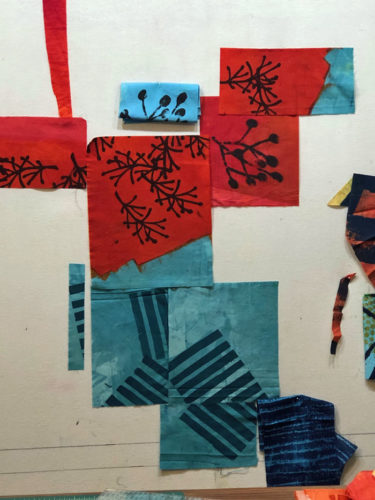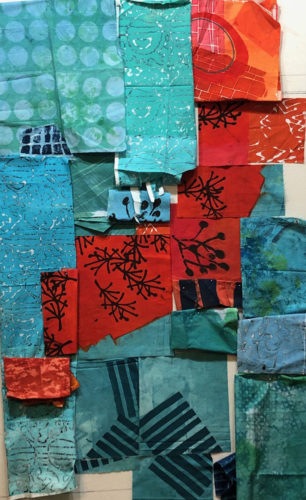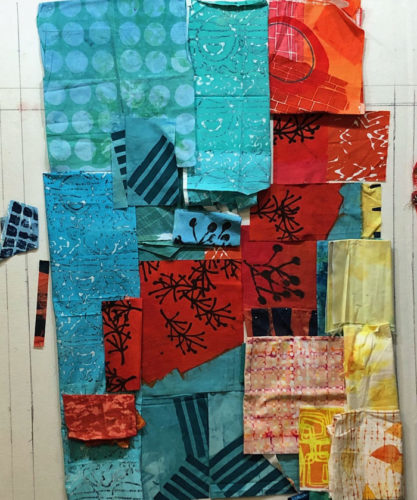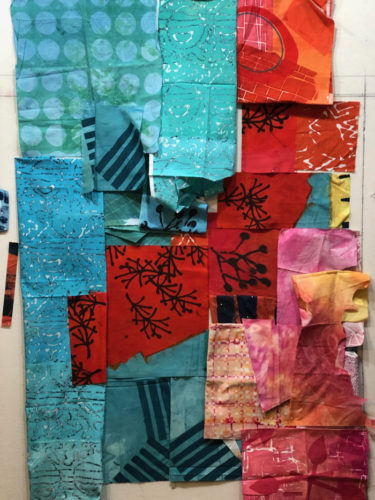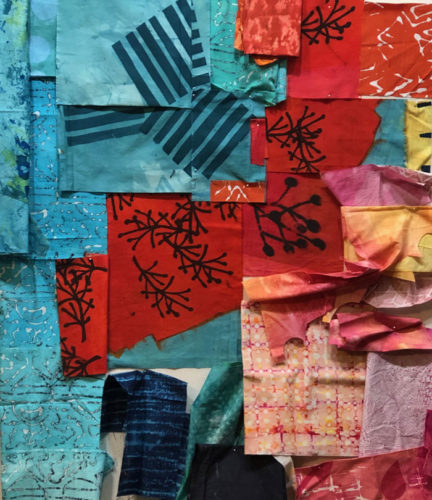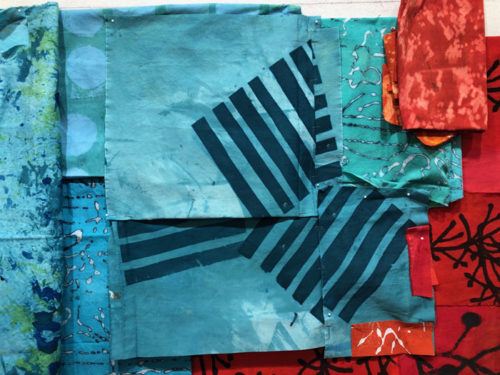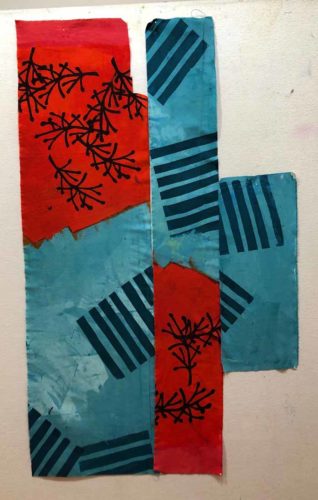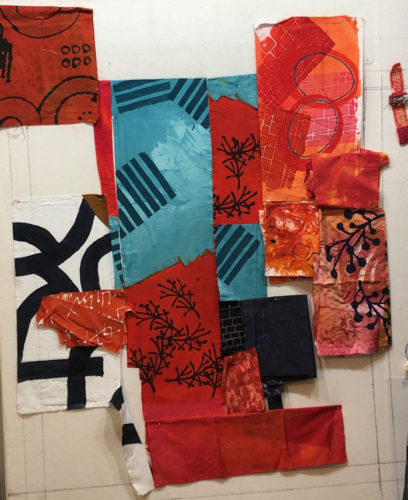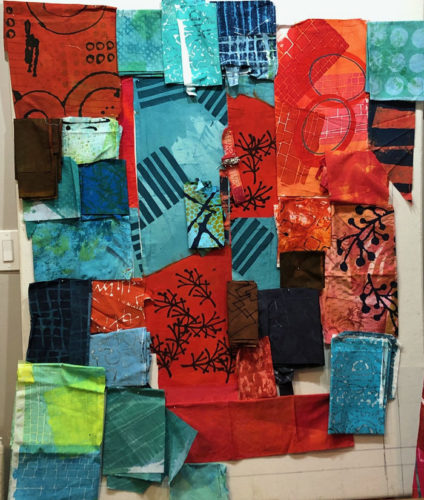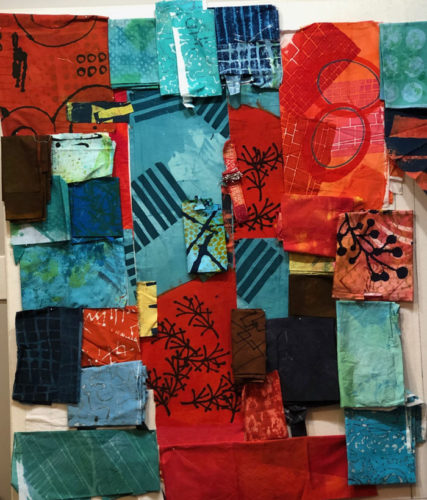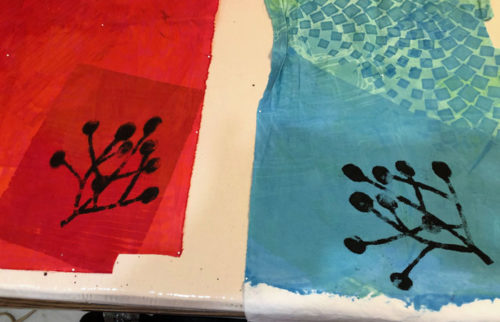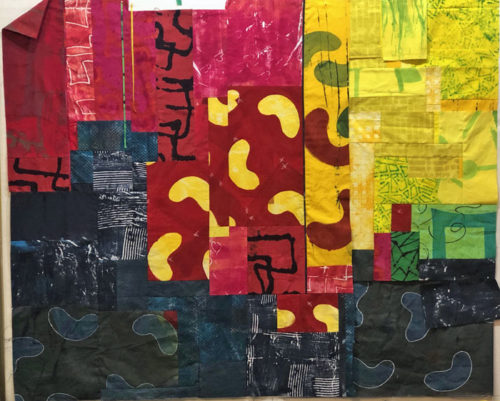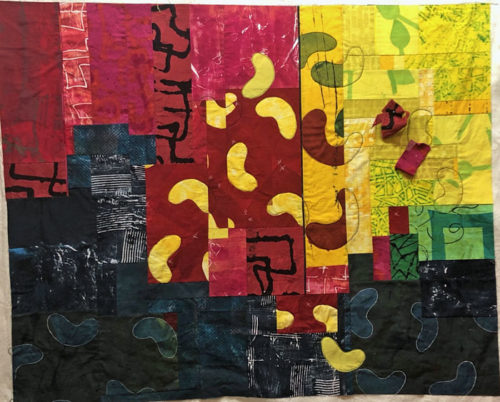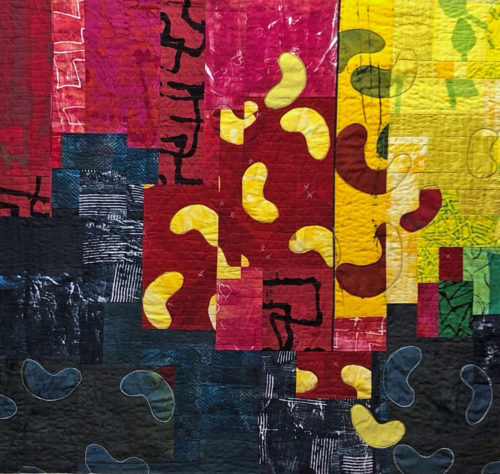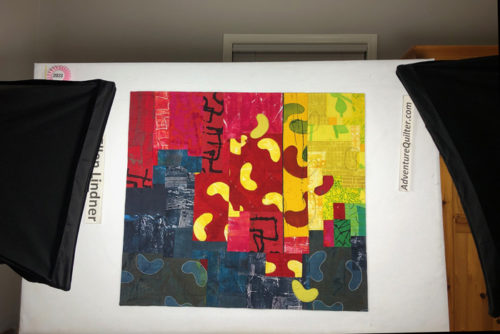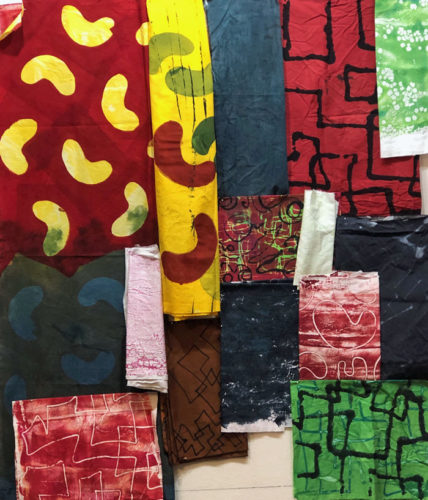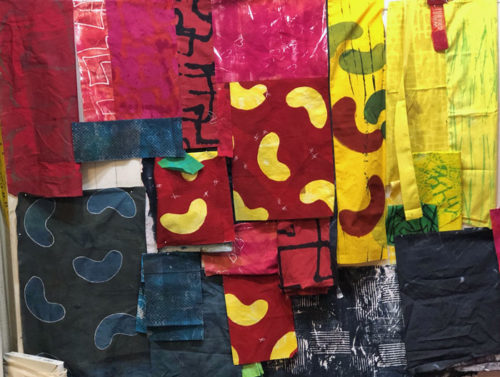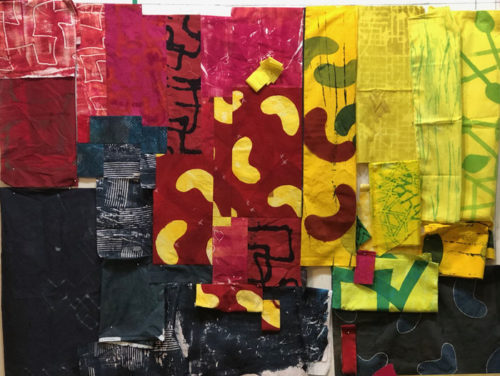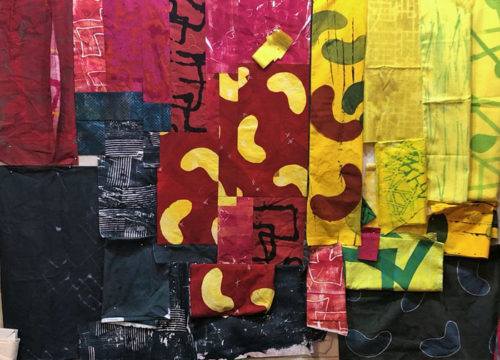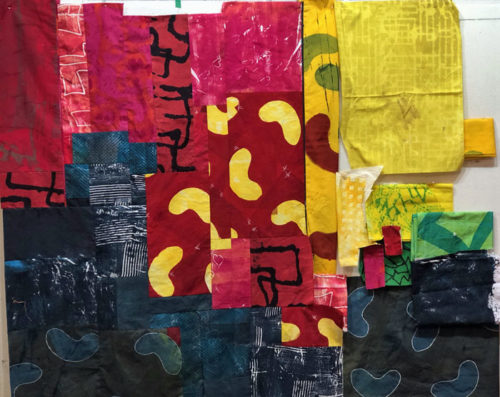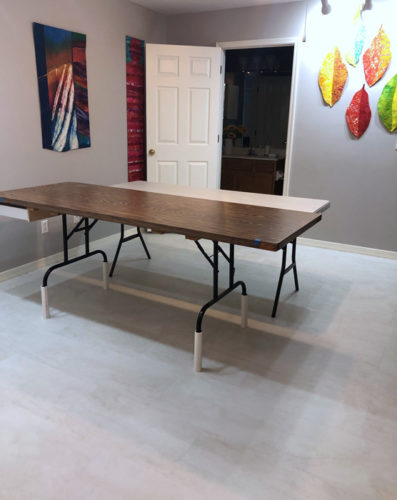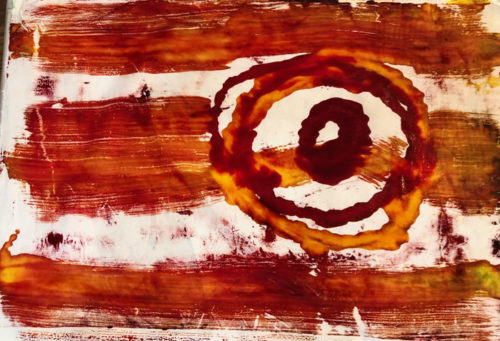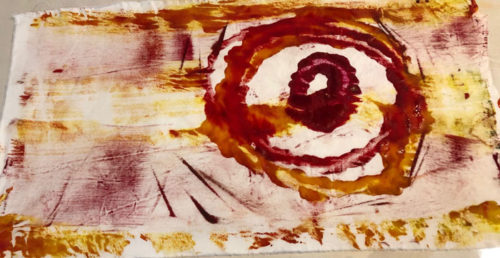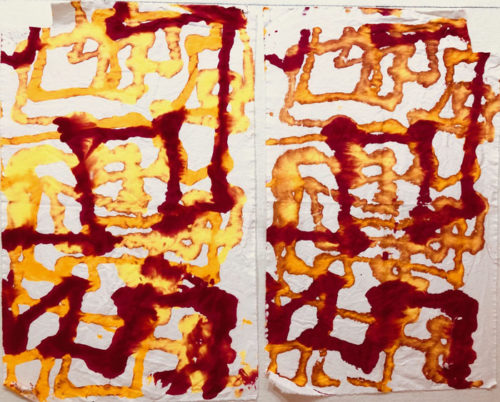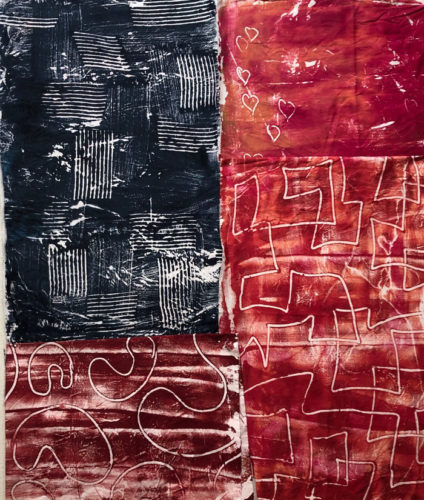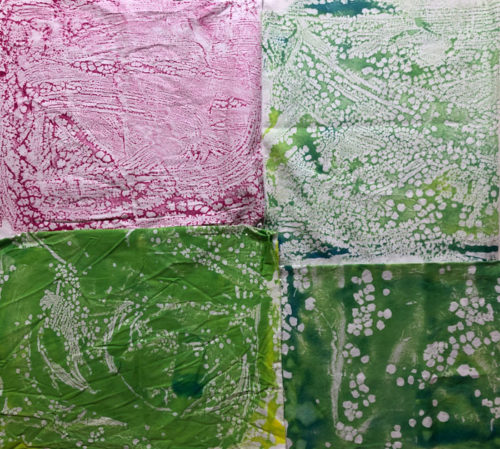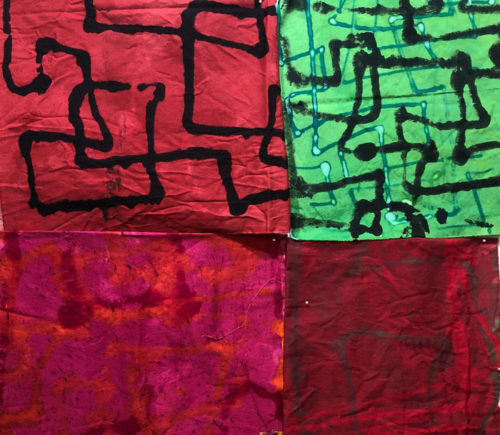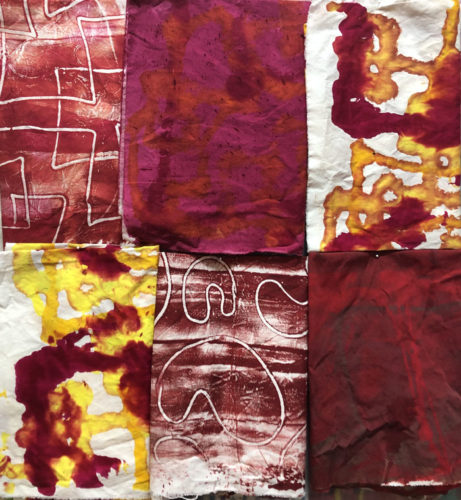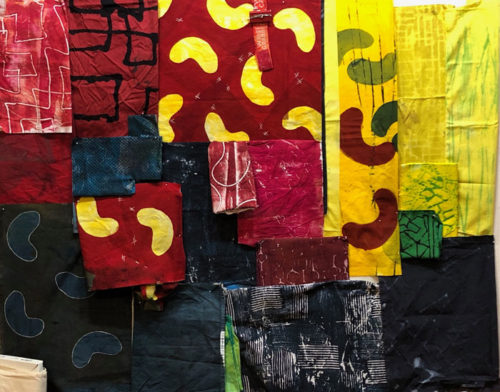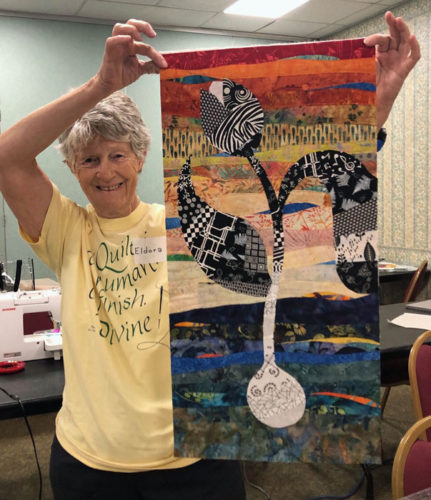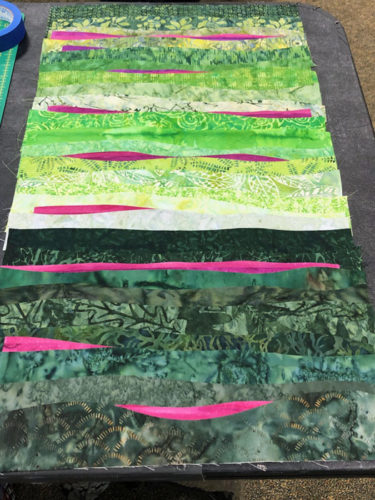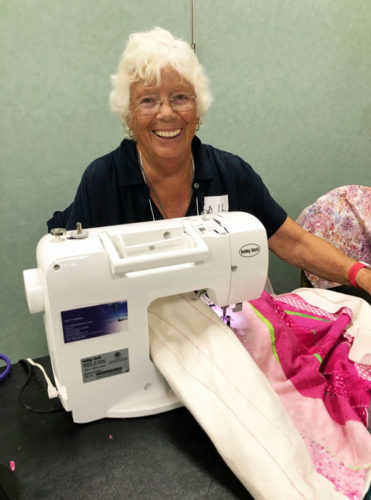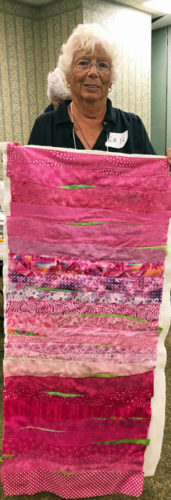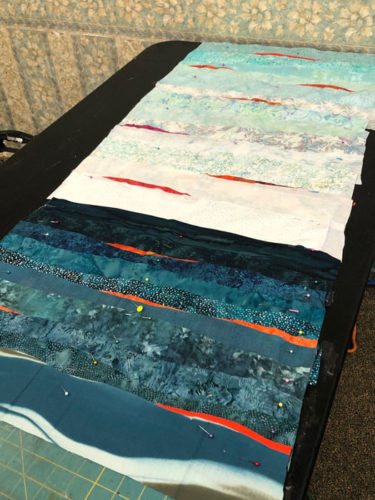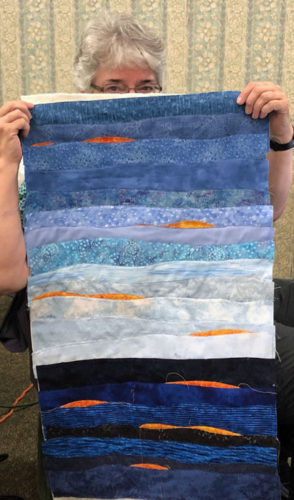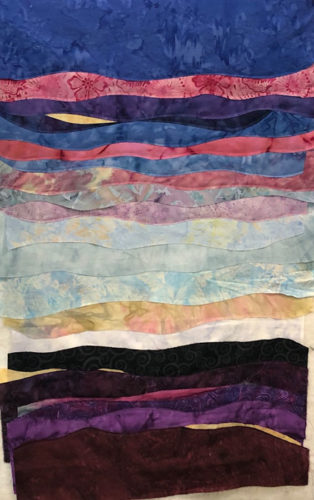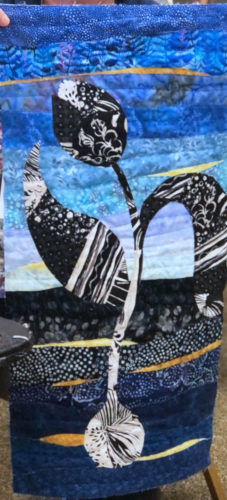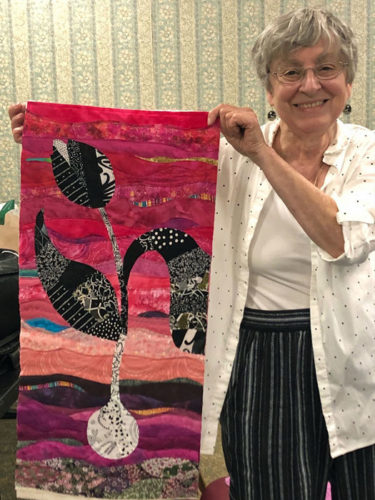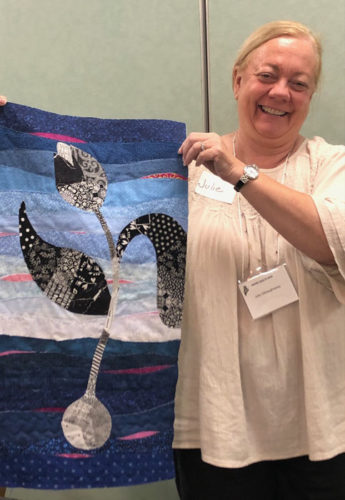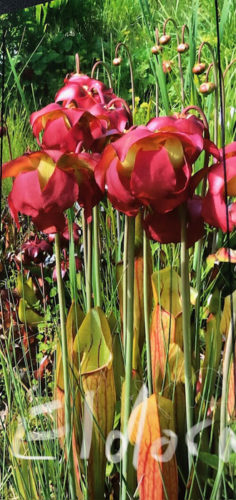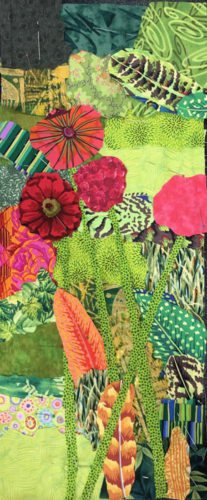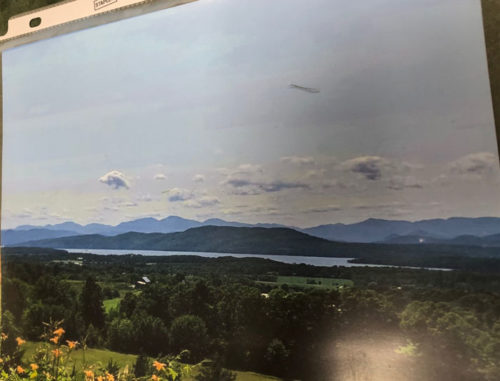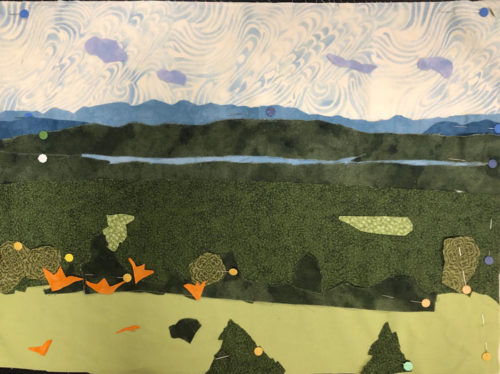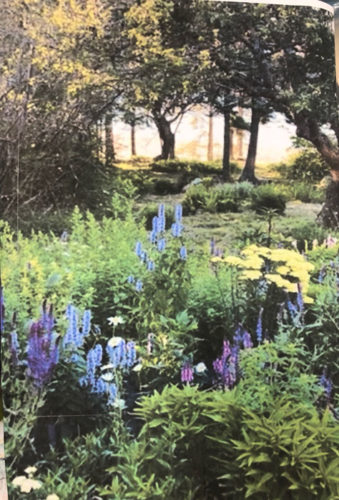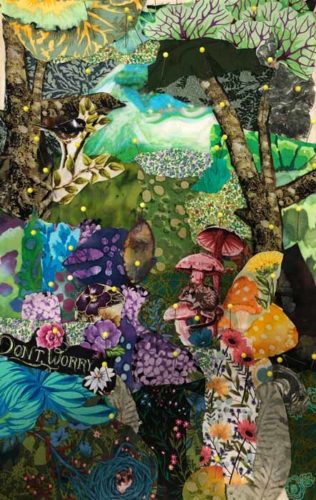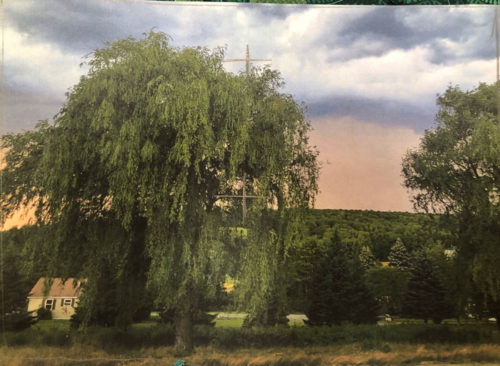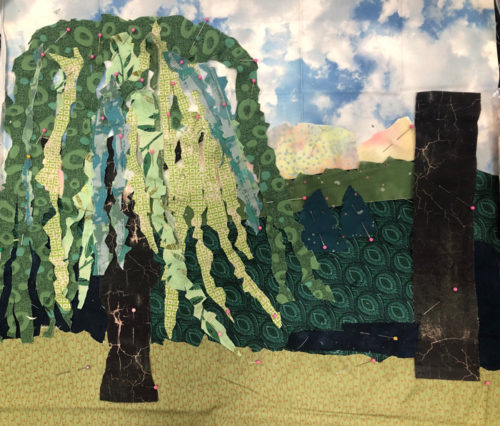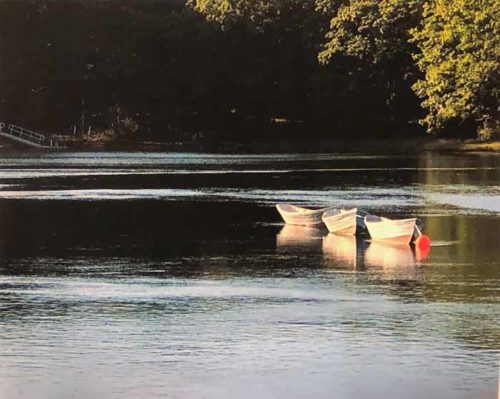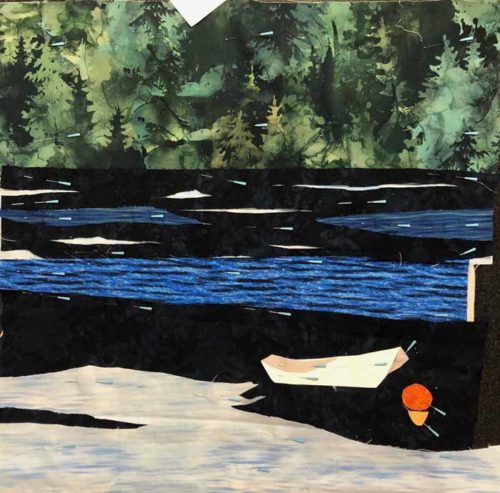I recently taught two classes. One was “Design Your Own Nature Quilt,” and the ladies did a great job. The supply list includes artistic courage and they did not disappoint.
After a morning learning about design and preparing a sketch, the students start creating their fabric collages in the afternoon. It can be a little intimidating because it requires INTERPRETING their inspiration photos, rather than just COPYING them.
With only a few hours to work with fabric, they still made excellent progress on their quilts. Each student worked from her own inspiration photo, so each quilt was different and each student had her own issues to contend with.
Michelle’s photo was taken while canoeing on a very calm lake. I cautioned her about the subtleties of merging water colors, but she came with the right fabrics and was willing the spend the time needed to create her effects.
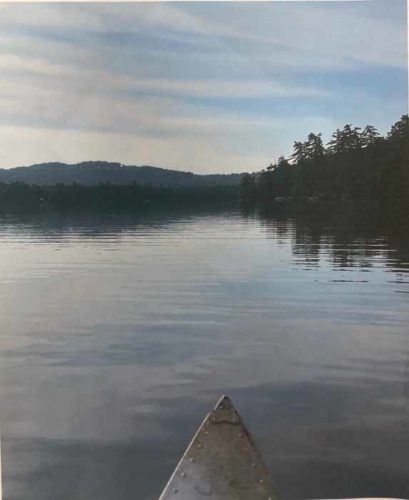
And this is where she left off. I think it’s very successful. Can you see all the time she spent shredding fabrics in order to give a feel of the water reflection? She’ll add French knots to emulate rivets on the point on the canoe.
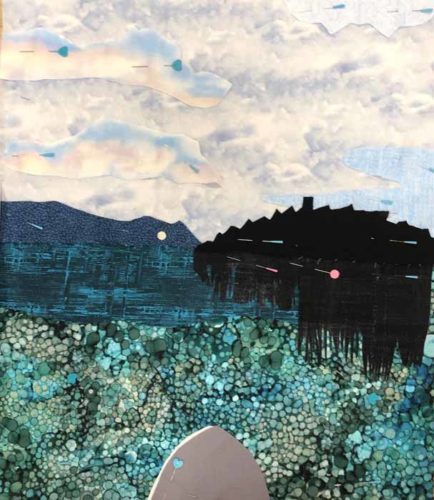
Heather’s photo featured a favorite tree.
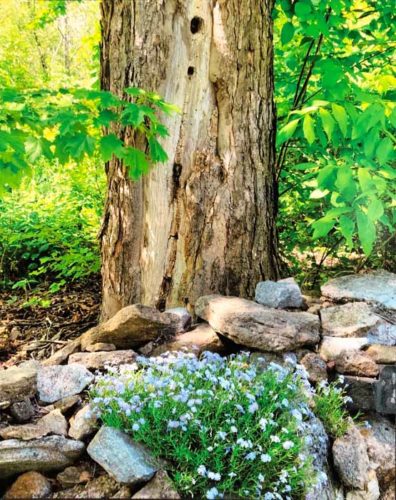
She cropped it to improve the composition and made excellent progress on her quilt.
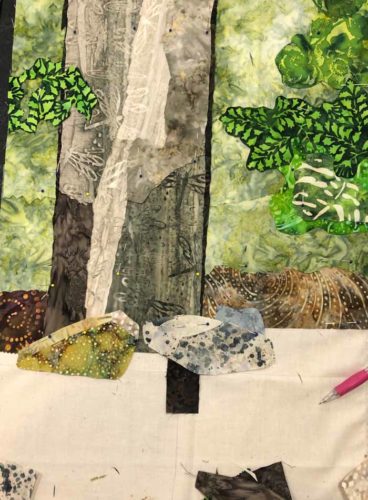
Sharon chose a beautiful sunset.
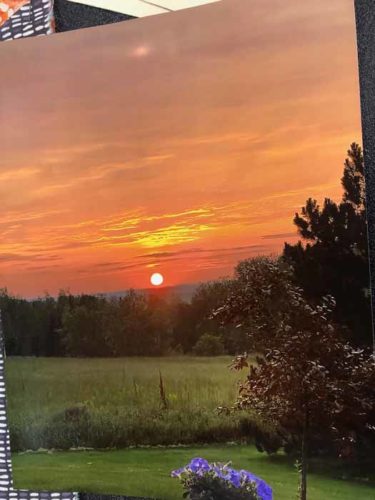
She had to leave class early, but still made a good start on her piece.
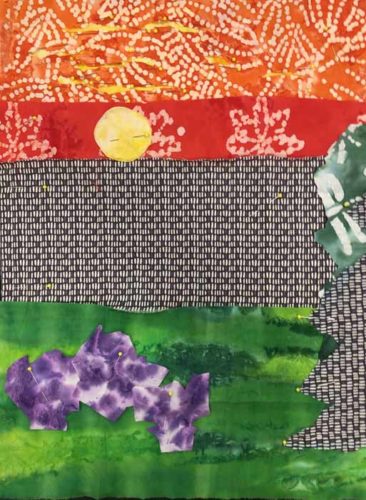
Susan’s photo included two different types of flowers, with a foliage background.
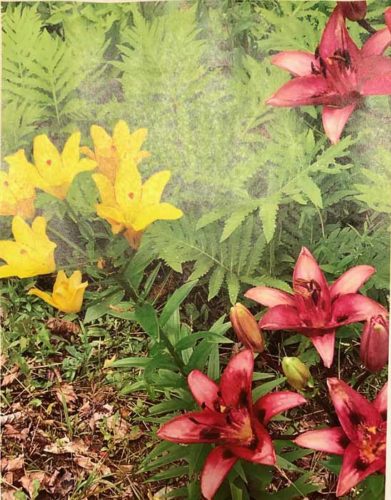
She simplified shapes and made a good start on her quilt.
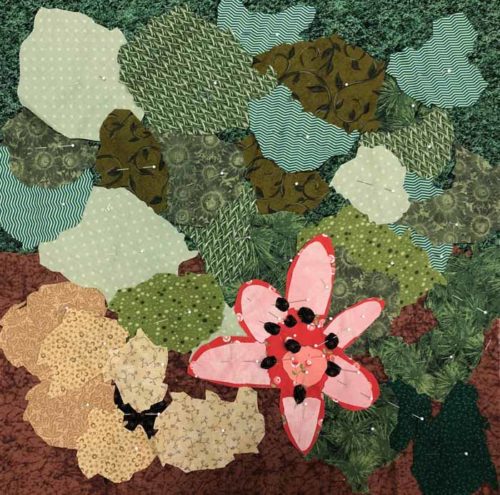
Jenn used a wonderful photo featuring lupines.
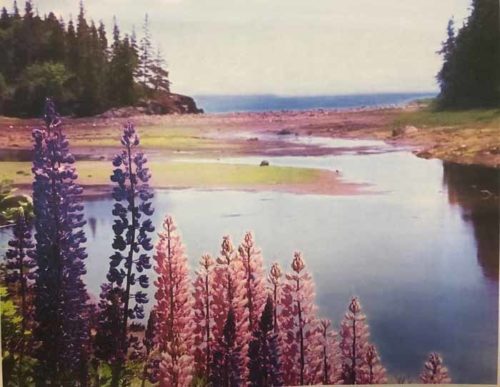
She knew she couldn’t easily replicate the entire image, so she cropped it down and simplified. She’ll be able to cut her flower petal/shapes more irregularly, which will speed things up.
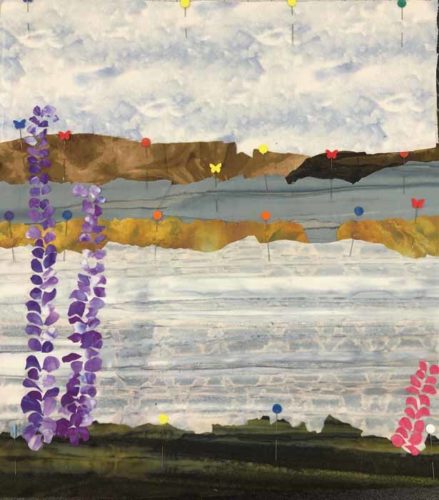
Charlene selected a VERY complex photo of lily pads and flowers. She knew she’d have to simplify and crop, so she got to work.
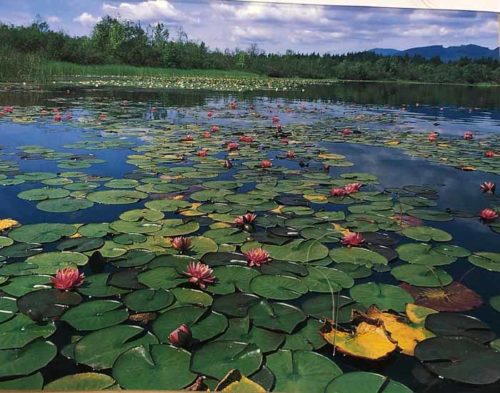
She still had her work cut out for her, but had no qualms about cutting many lily pads. As you can see, it began to take shape nicely right away.
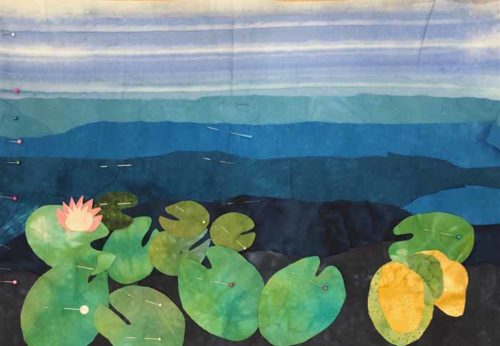
Won’t these be great? I’ll show you more quilts in-progress in the next post.
Ellen Lindner
